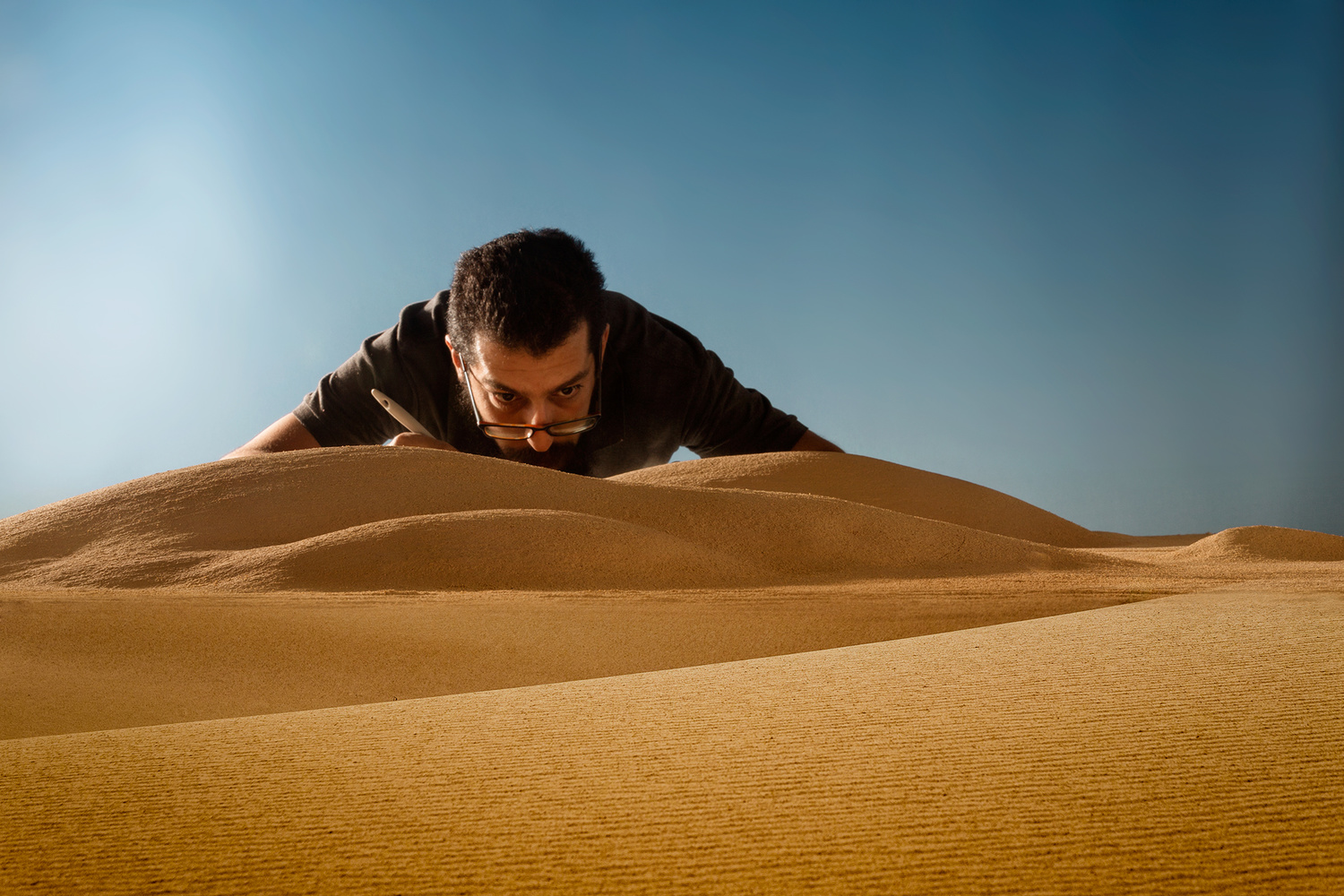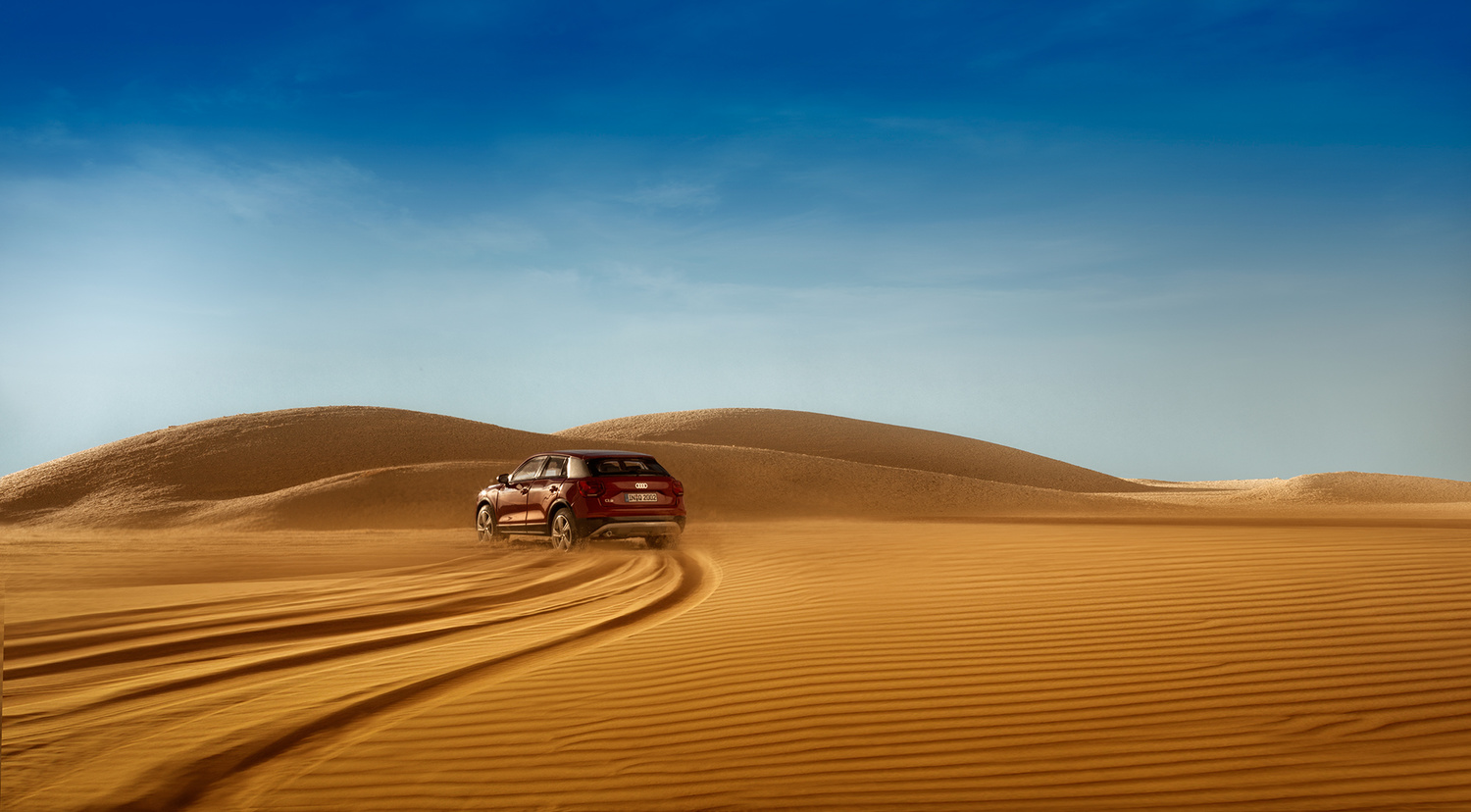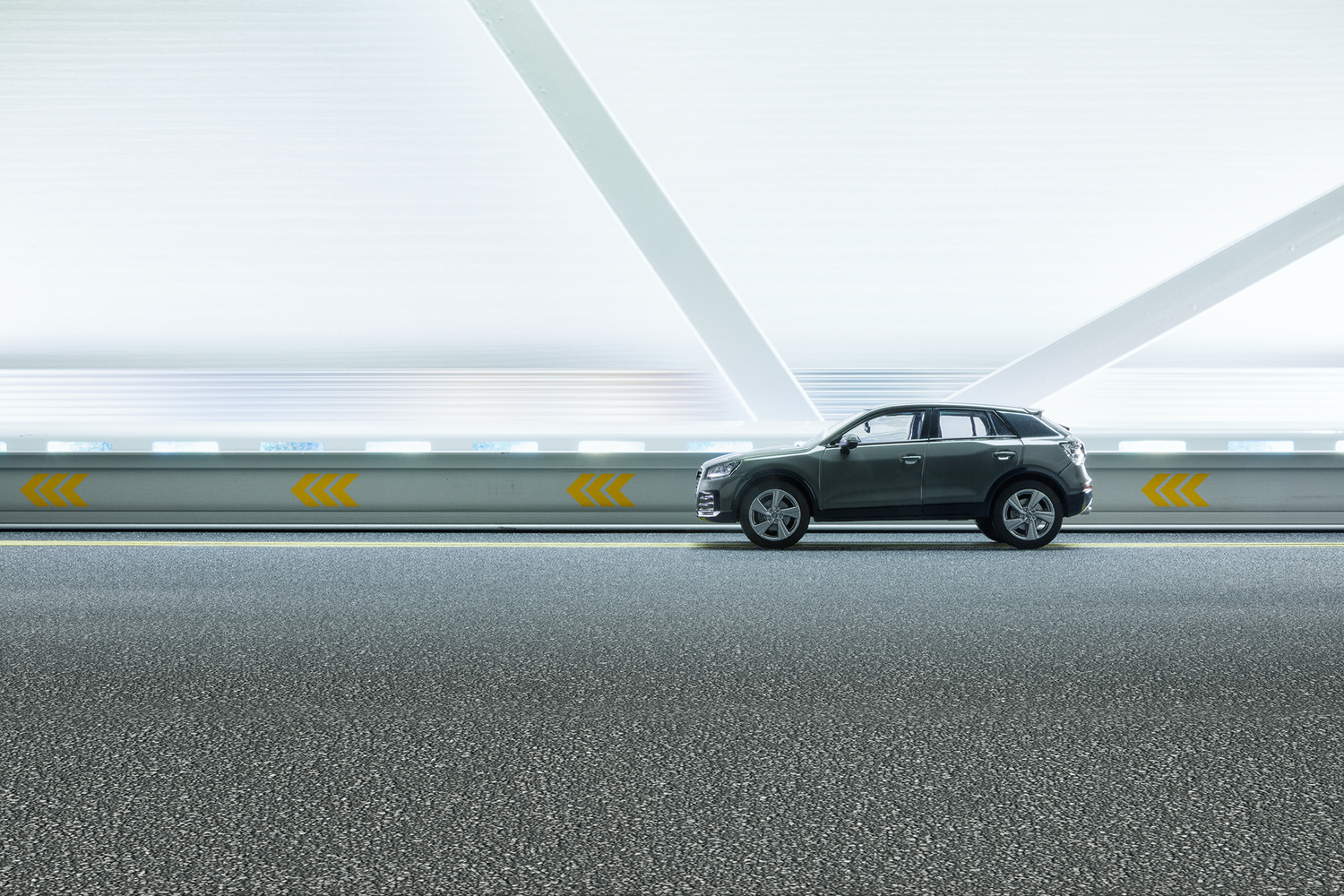If you've not seen Felix Hernandez' images before, you're missing out. The Cancun-based photographer's work is as brilliantly resourceful as it is creative. In this interview, we go behind the scenes of his shoot using 1/45 scale models for Audi Middle East and Hernandez guides us through his process and offers advice for up and coming photographers.
Recently, Audi Middle East and Audi Magazine hired Photographer Felix Hernandez to create an artistic campaign for the new Audi Q2, except Hernandez wouldn't be working with the car itself. Rather, he would be working with scale models only 1/45 the size of the real thing, which is more than twice as small as the 1/18 models he normally works with. Because the car is so new to the market, Audi themselves were the only ones with scale models (and they worked with the smaller size), meaning Hernandez was faced with the challenge of making the models look real despite their diminutive dimensions. He notes that while they were quite intricate, there's still a loss of detail as the size continues to shrink:
Although the detail in the model is good, it wasn't as good as a bigger scale. The more you have in a model, the more realistic it will look at the end.
Hernandez was the first photographer to work with scale models for the Audi brand, first bringing his clever style to the table for Audi Deutschland. Before the company even hired him, though, they had to notice him. He advocates sharing abundantly on multiple platforms, calling it "part of [his] daily work." It was there that Audi came across his photos and got in touch.
You can have amazing images, but if you don't share, nobody is going to see them.
Whereas Audi certainly appreciated the realism and technical prowess of Hernandez' work, it was the process they were most drawn to. As such, both Audi Deutschland and Audi Middle East commissioned him for projects that showed off the behind the scenes work as much as the final product. They were meant less for typical advertising and more for social media.
Setting up each shoot could be incredibly time-consuming. While some scenes could be done in a day, others were built from scratch and could take as long as a month, which could include travel to take the shot in real-life landscapes or to get a background image for a composite. For the Audi Middle East project, the three scenes took a total of two weeks of work. Check out the behind the scenes video below to see some of the process.
The smaller models introduced another challenge beyond the loss of detail: whereas their size would normally necessitate the use of a macro lens, such lenses tend to lose depth of field as maximum magnification is approached, which is needed to lend the images a realistic feel. While the normal way to obviate this issue is focus stacking, this would disallow Hernandez from light painting or some of the in-camera effects he used. This meant careful compositions and no focus stacking or macro lens. Instead, Hernandez worked with a 5D Mark III, 24-105mm lens, and 24mm tilt-shift lens. In terms of lighting, he used Einstein and Bowens monolights when freezing things like smoke or fog, while for other shots, he used normal LED lights or Lume Cubes.
Whereas his project for Audi Deutschland was created with the goal of minimizing post-production, Hernandez decided to use both in-camera effects and post-production techniques for this project. This meant designing and building dioramas to shoot in his studio, but also traveling to Dubai to photograph backgrounds that would later be composited in Photoshop. This again underscored the desire to show off his process:You could achieve similar results or even better by doing everything in CG, but then it would have been pointless for the goal: sharing the creative and alternative process in social media.
Despite the crazy attention to detail and work that goes into these shoots, Hernandez enjoys them immensely, saying there isn't a "toughest part. It's all pure fun." Nonetheless, he notes that because he is always experimenting with new methods and techniques, sometimes, they don't work, and he constantly has to evaluate the process and the end product to ensure that he's achieving the level of quality and realism he is known for.
In addition to his post-processing prowess, Hernandez is a big fan of in-camera effects, often experimenting with smoke, water, fire, and more:
Doing this is what makes me work a little different from the rest. Not that I'm the only one doing it, but we are few. So, in a world so competitive and with so many great images and photographers, you have to find your own way of 'speaking.'
Hernandez is a big proponent of finding and embracing one's personal identity as a photographer and creative and using it to establish a strong brand that translates into commercial success. I think Hernandez is a great example of how crucial it is to explore one's self and develop that which is at the core. This requires constant experimentation, and as he mentions in his advice to other photographers, he sees photography and digital art as the practice of telling stories; he encourages photographers to "look beyond the frame, look beyond the reality, beyond the comfort zone, and what we already know."
Hernandez' work is a shining example of the intersection of personal devotion, creativity, and technical ability coming together to create a commercial success. It really underscores the importance of personal projects, both to explore, find, and develop one's personal expertise and to translate that work into viable commercial endeavors. After all, isn't the chance to turn personal creativity into income the reason most of us are in this?
To see Hernandez' full project, be sure to check out Audi Middle East. You can also follow Hernandez right here on Fstoppers, as well as Facebook, Behance, YouTube, and his website.













Amazing as always!
Hi Piotr... Thank you mate.
They're pretty freakin' awesome
Thanks Michael!
So proud of you brother Felix.
Hey Sherwin, thank you brother!
Great job. Saludos.
Gracias norman... Saludos.!